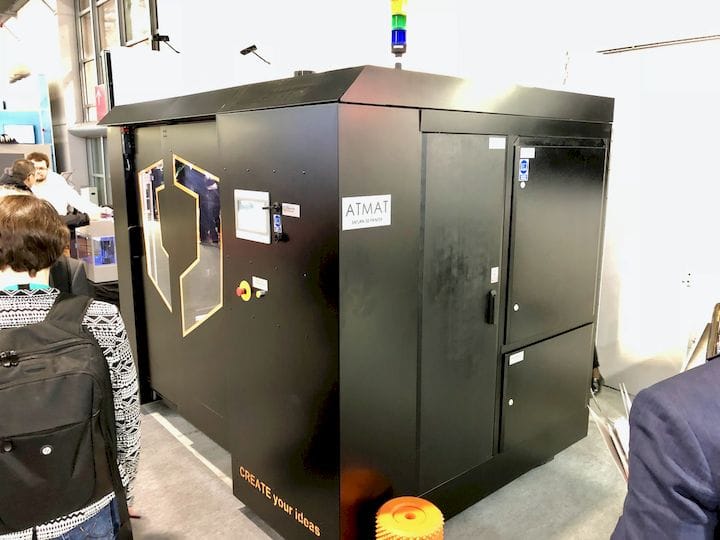![The ATMAT Saturn large-format 3D printer [Source: Fabbaloo]](https://fabbaloo.com/wp-content/uploads/2020/05/image-asset_img_5eb0a055a84ef.jpg)
We’re looking at the Saturn Large-Format 3D Printer today.
This device is made by ATMAT, a Krakow, Poland-based operation, and one of the surprisingly many Polish 3D printing companies. We had not heard of them previously, so our encounter at formnext 2018 was quite enlightening.
Like many Polish 3D printer companies, they started the organization from a university base around 4-5 years ago, with their first product launched 3 and a half years ago. Their first machine sold only 10-12 units, but the experience in doing so led to a very successful second product that sold “many”.
![The ATMAT Signal Pro 3D printer [Source: Fabbaloo]](https://fabbaloo.com/wp-content/uploads/2020/05/image-asset_img_5eb0a055dc17c.jpg)
The company markets a number of different 3D printers, such as the Signal Pro shown here. They also offer a more basic model, the Signal, as well as the huge Jupiter and Galaxy models. Today we’re looking at the Saturn machine.
The Saturn machine is huge, with a build volume of 1200 x 1000 x 1000 mm. Prints are placed on a massive solid granite surface that’s heated to 120C by four separate zone heaters. The build chamber itself is raised to 50C for print reliability.
ATMAT says the Saturn is designed for production use, and there are some features that would definitely help production activities, such as the filament-out sensor.
But more importantly is their unusual extrusion concept. Most professional 3D printers use a dual nozzle approach, where the second nozzle is most often used to deploy soluble support material. This support material allows for the possibility of easily 3D printing very complex objects, as there is no physical force required to remove the support.
The soluble support capability also exists in the Saturn, as it includes a dedicated support material extruder.
But it also contains TWO other extruders / toolheads.
They’re in the configuration for capacity. In other words, the Saturn is a three-extruder machine.
The extruders are equipped with 2mm nozzles that will deliver large volumes of material quickly. This means that prints emerging from the Saturn will be a bit coarse in surface finish, but will complete quickly. I suspect it might be possible for use of two different materials – or most likely colors, in those dual model material extruders as well.
The motion system used in the Saturn is a linear rail arrangement, which should provide for rapid and reliable printing. I should add that the Saturn also includes automatic calibration.
Finally, the Saturn is designed to accommodate health and safety requirements, making it suitable for workshops and factories. In the image at top, note the standard “in operation” light poking out from the top.
We’re told the ATMAT Saturn is priced near €50K (US$57K), making it reasonably priced for a machine of such huge size. If you’re looking for a large-format 3D printer, consider the Saturn.











FELIXprinters has released a new bioprinter, the FELIX BIOprinter, which is quite a change for the long-time 3D printer manufacturer.